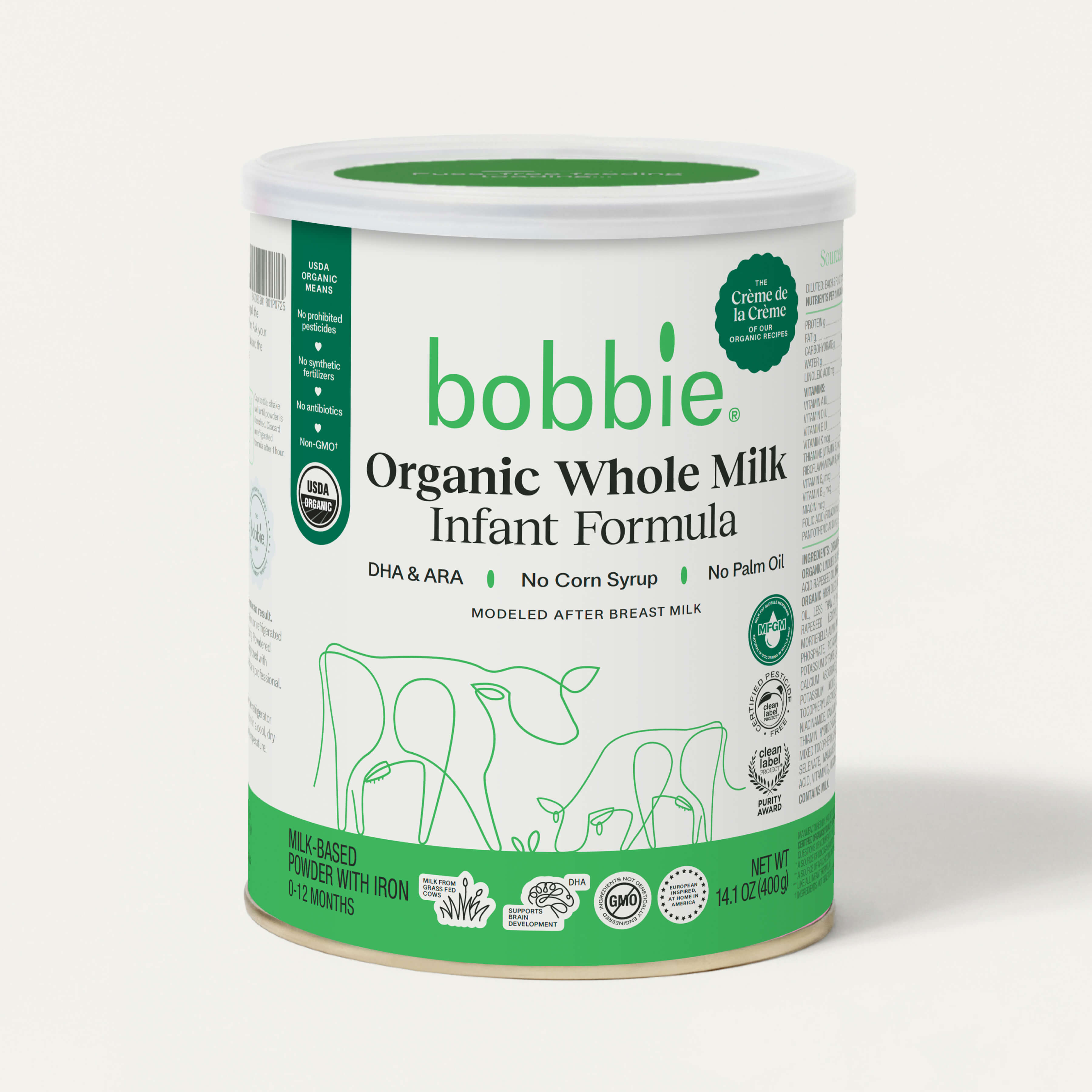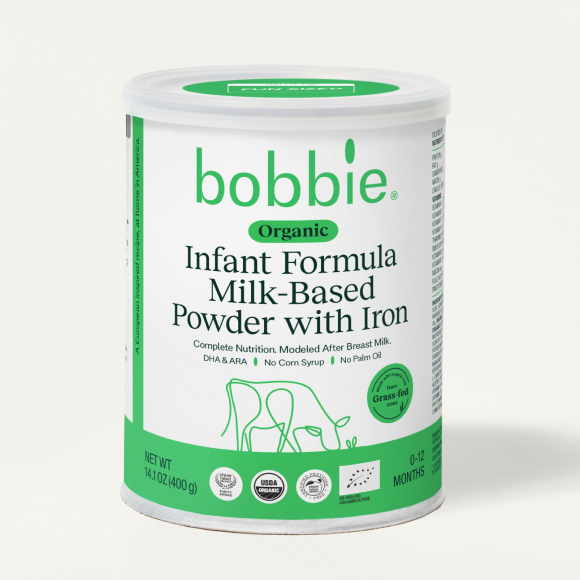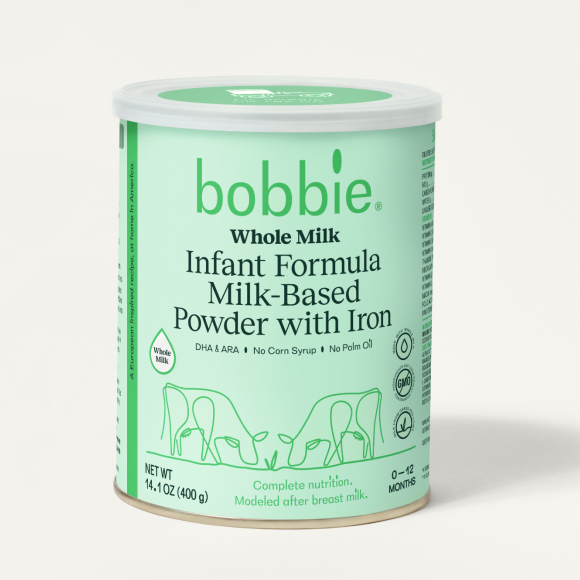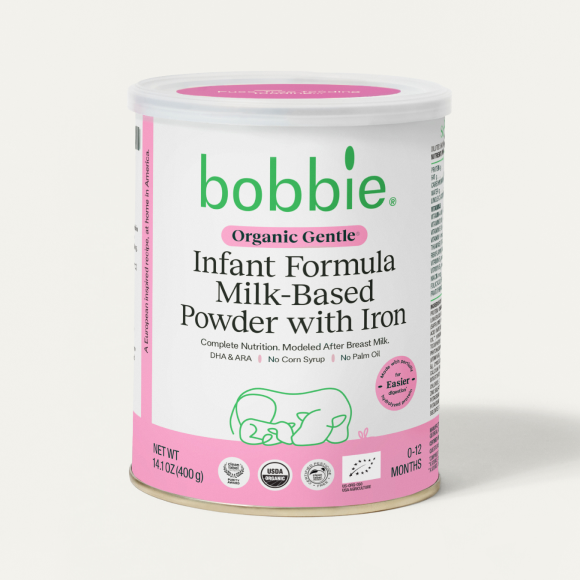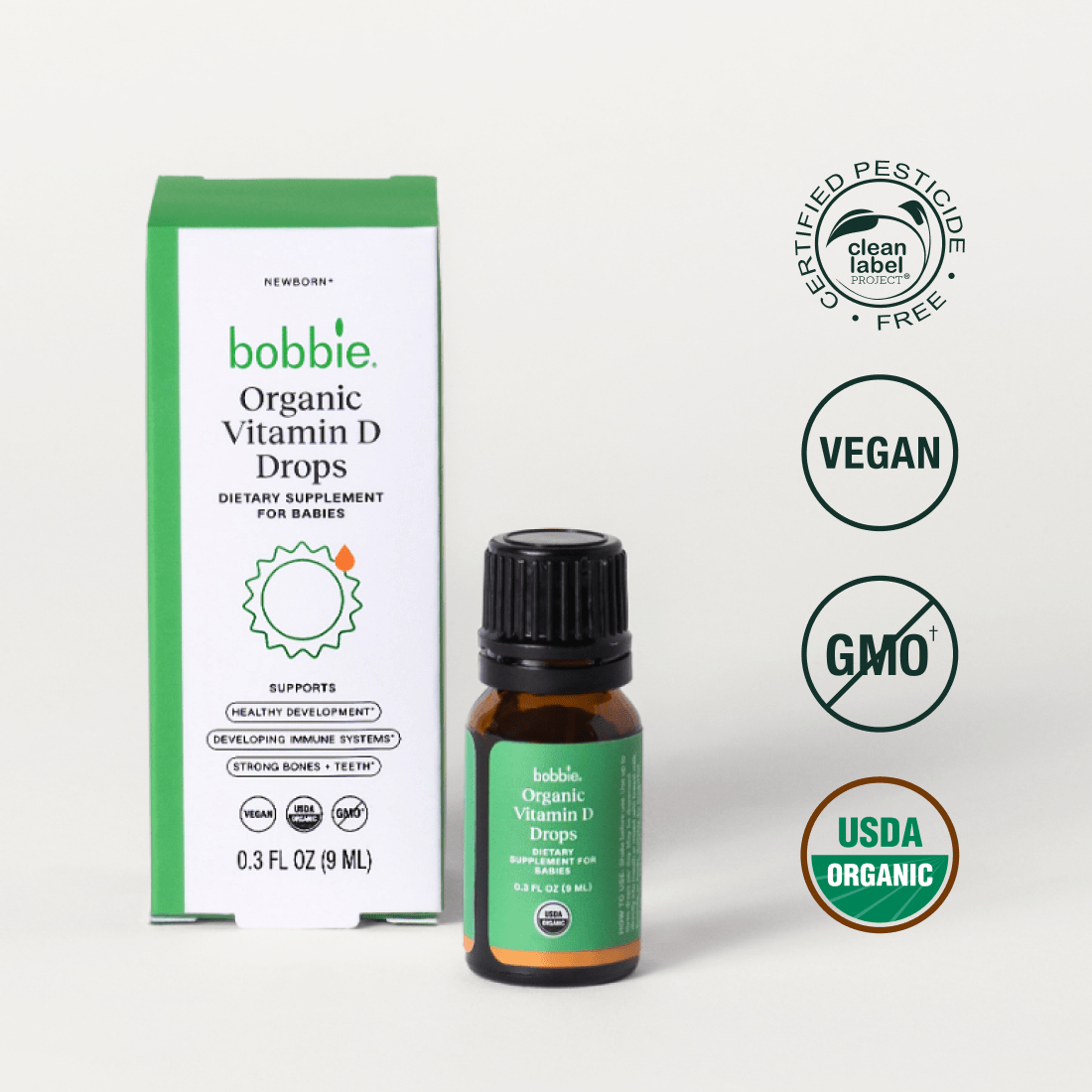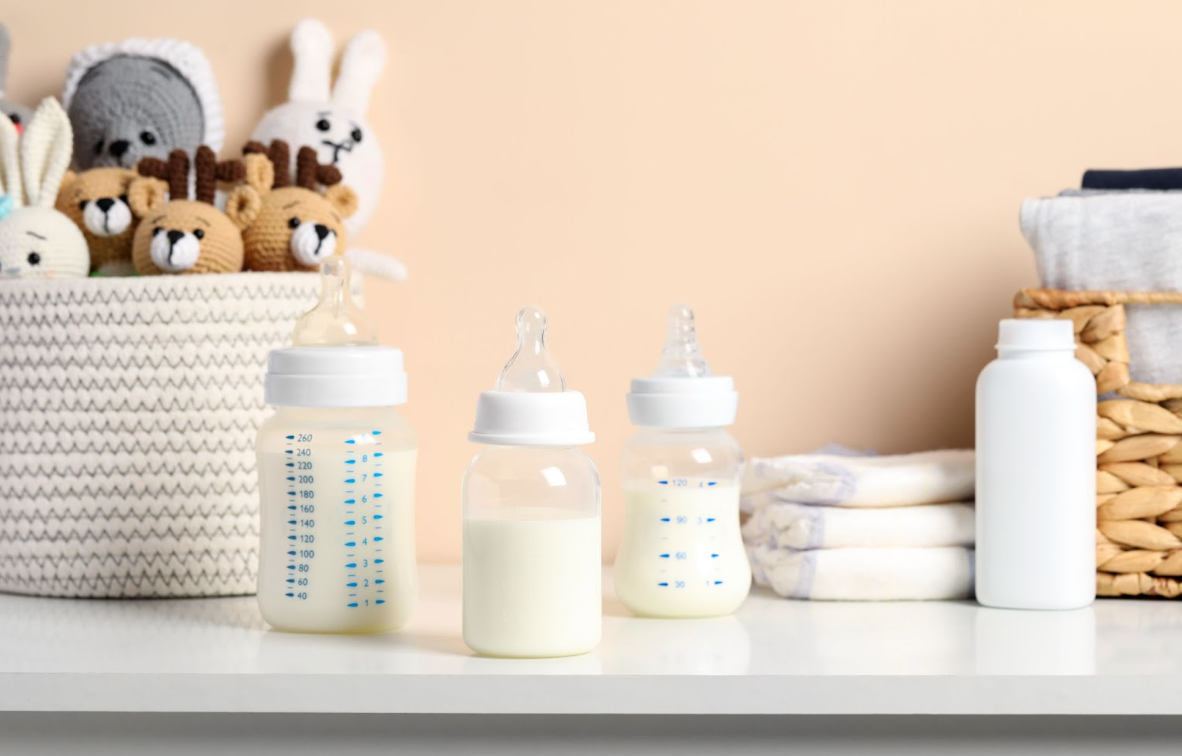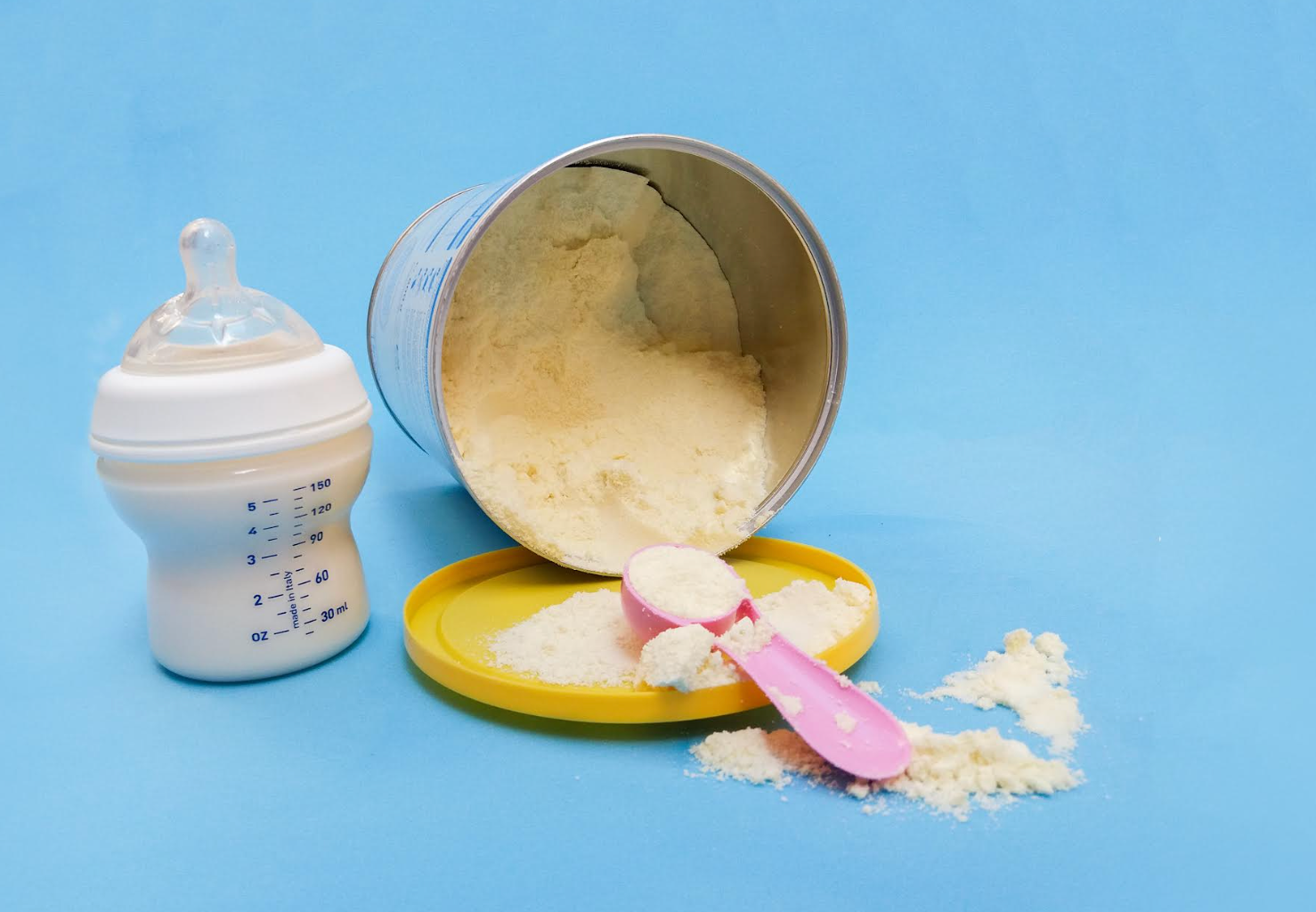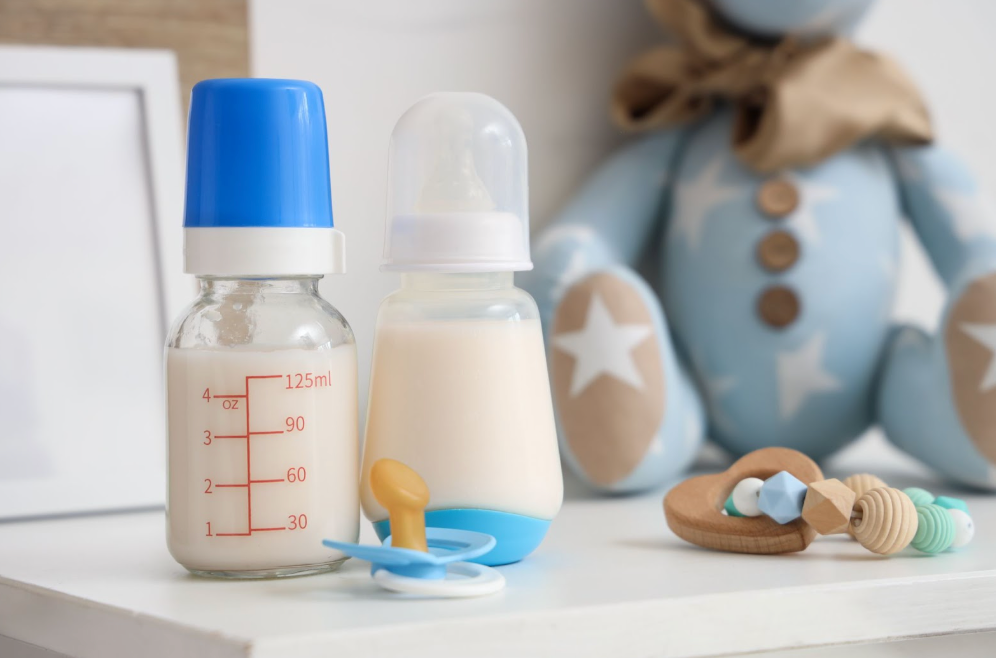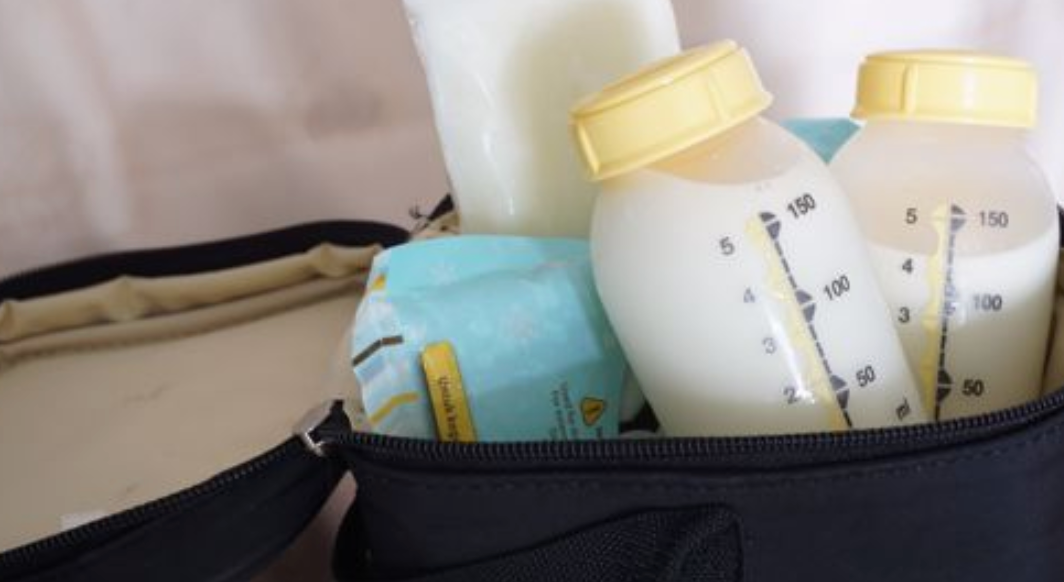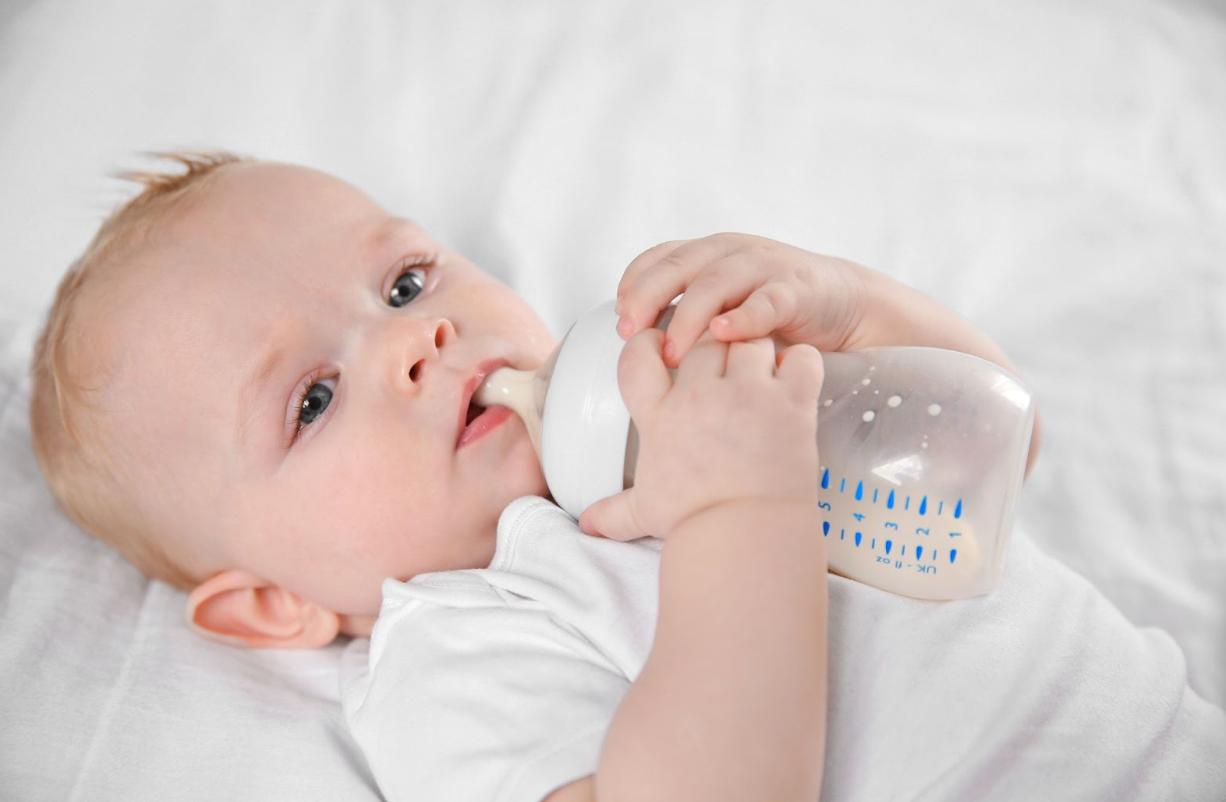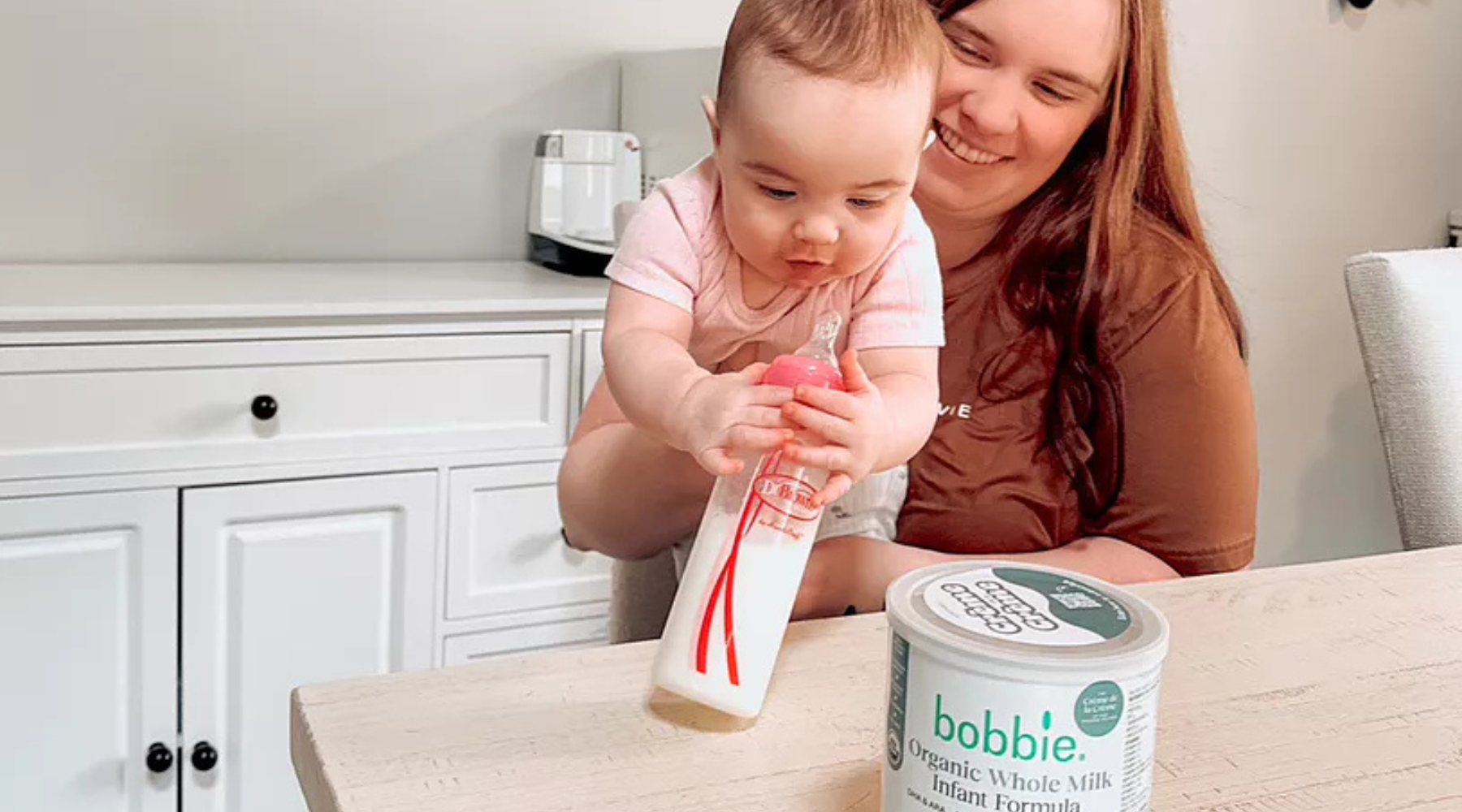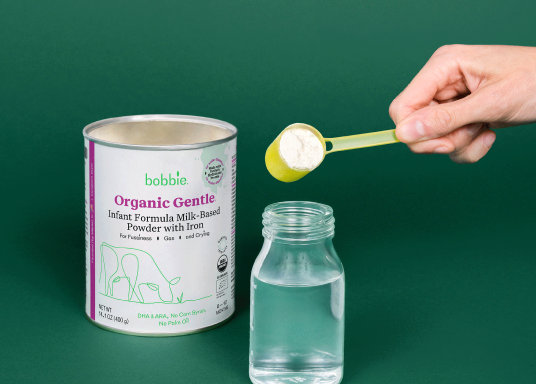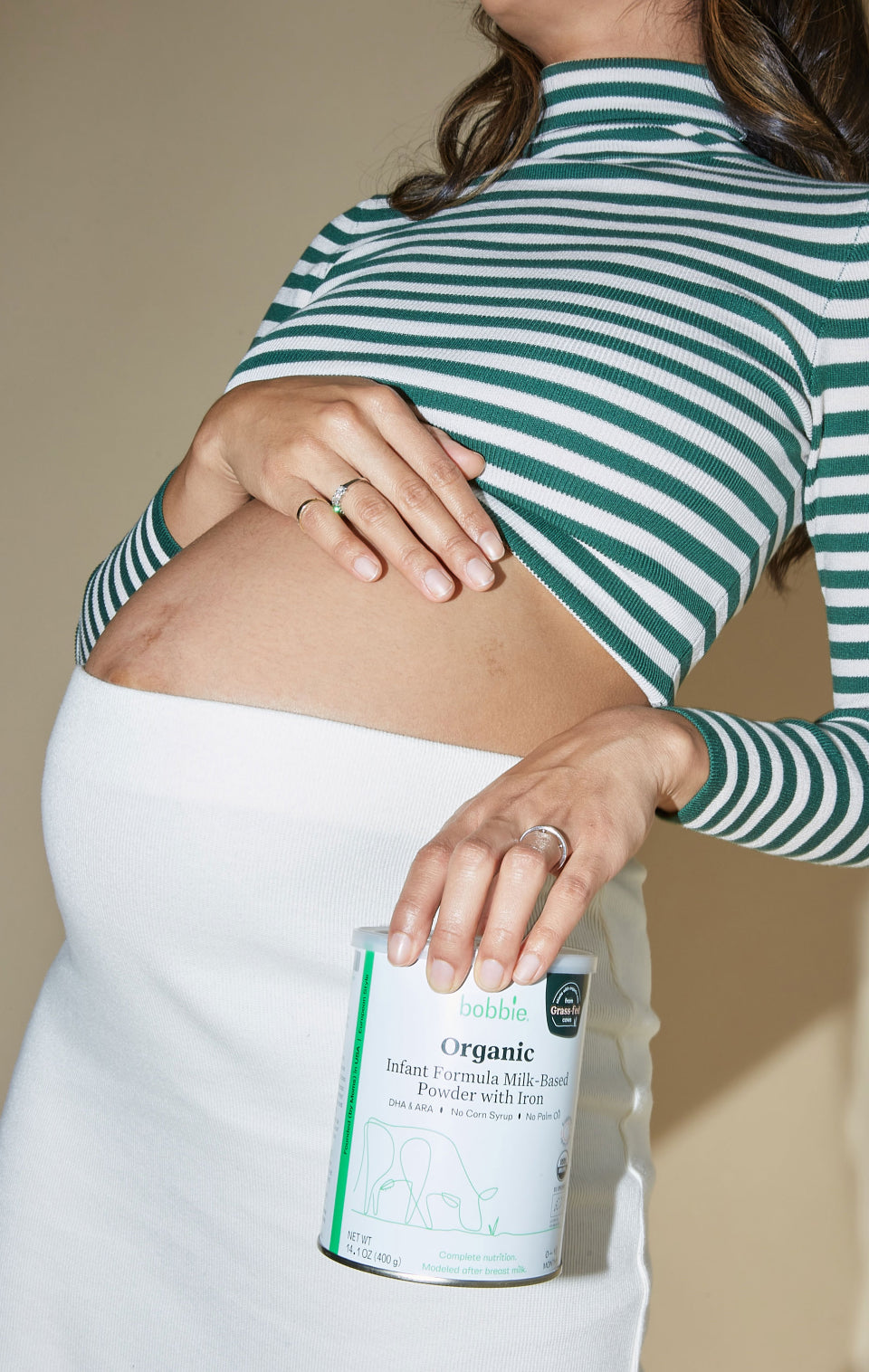Published November 14, 2023

Your Guide to Baby Poop (Colors and More)
Something no one tells you before becoming a parent? How often you will think about, analyze, look at, and talk about baby poop! While it is no one’s favorite part of the job, understanding how a baby’s poop frequency, color and consistency relates to their diet and health is crucial info for new parents.
We’ll break down everything you need to know about your baby’s stools, including a handy poop chart with a breakdown of normal and abnormal baby poop colors. Let’s get to it!
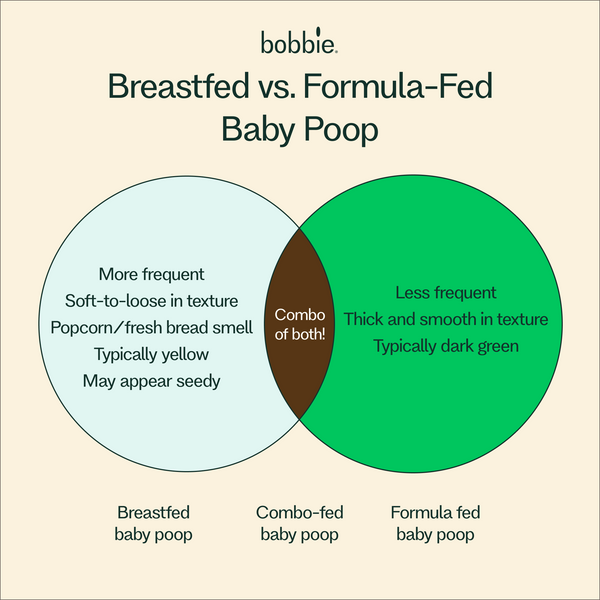
Formula Fed Baby Poop
First things first– the features of your baby’s poop will differ based on what you feed them. This makes sense! After all, this is true of adults as well. We often see dark green poop in babies who are formula-fed, and baby formula poops also tend to be a bit thicker and smoother in texture. Formula fed baby poop is also consistent day-to-day and week-to-week as there is no variation in the ingredients in baby’s diet (unlike breastfed infants, who receive a variety of dietary proteins from the lactating parent’s meals). Formula fed babies often poop less frequently compared to breastfed babies, sometimes going several days at a time between bowel movements.
Meet the first and only USDA organic infant formula manufactured in the U.S.! Bobbie Organic Whole Milk Formula offers complete nutrition for baby's first year with our closest to breastmilk recipe.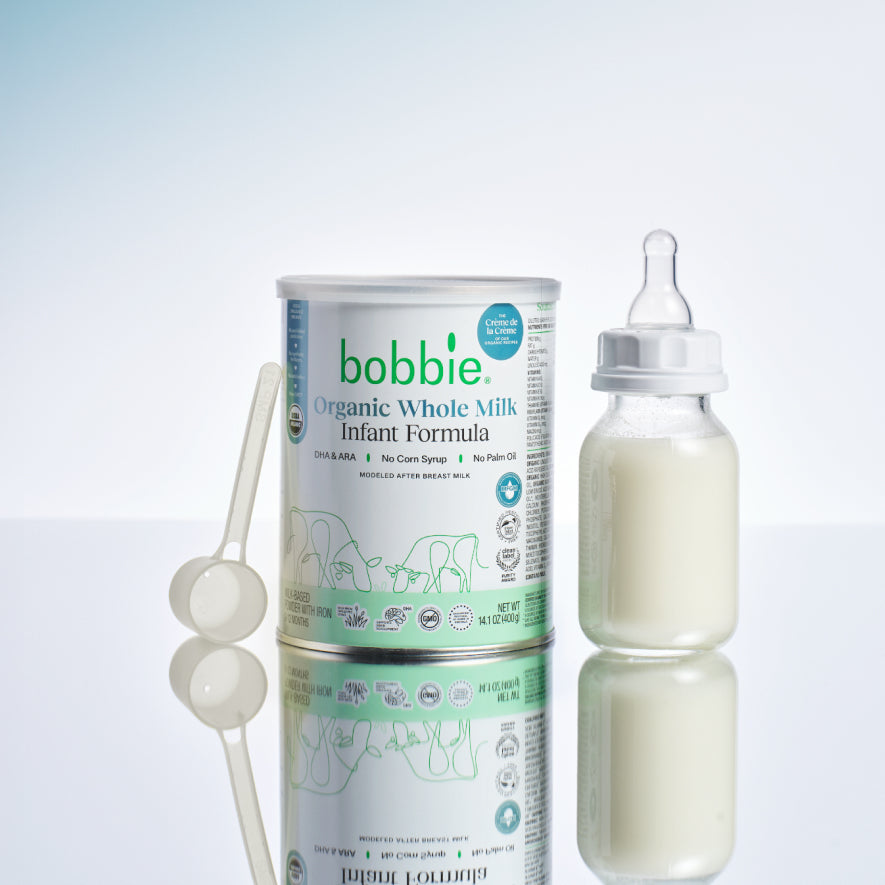
Shop Organic Whole Milk Infant Formula

Breastfed Baby Poop
Babies who are exclusively breastfed tend to have frequent, soft-to-loose, yellow stools that may be seedy. These “seeds” are small bits of undigested milk proteins and are totally normal! Breastfed baby poop also tends to have a slightly sweet or “yeasty” smell, similar to popcorn or fresh bread. Nursing babies often poop more frequently and may have bowel movements several times a day. This is common and not a cause for concern! If you are supplementing with formula (also known as combo feeding!), your baby’s stools will likely be more similar to formula fed baby poop than breastfed baby poop.
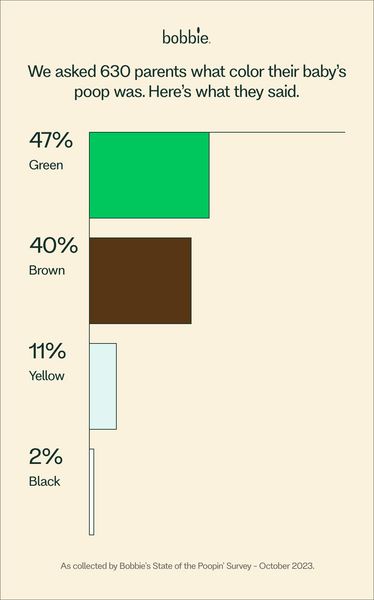
Baby Poop Colors (and What They Mean)
The range of possible baby poop colors is truly a rainbow, some of which are normal while others are not. Here’s what you need to know about each! And P.S., download this handy chart to keep as a reference for what’s normal and what’s not.

Black Baby Poop
Baby’s first stool after birth, called meconium, is sticky and tar-like. This newborn poop tends to be dark green to black in color and may show up in the first few diapers. After the first days of life however, black poop is considered abnormal and warrants a call to your baby’s pediatrician. Black poop can indicate dried or old blood passing from the intestines or an overload of iron.
Green Baby Poop
Light or dark green baby poop is normal and very common in formula fed babies! The color typically comes from the iron that is used to fortify baby formula. While the sudden change in color can be shocking when parents introduce formula to a previously exclusively breastfed baby, a change to green stools does not indicate an intolerance to formula. All shades of green poop are normal and expected for infants, especially those who have not started eating solid food yet.
Yellow Baby Poop
Most exclusively breastfed infants will have bright yellow stools similar to the color of mustard. These stools can appear thin or runny and often have small white chunks of undigested milk proteins (also called curds)! While parents sometimes get concerned that frequent, soft stools indicate diarrhea, several runny or pasty yellow stools a day is very common in infants who have not started solids and who are only receiving breast milk.
Brown Baby Poop
Many infants will begin to produce brown stools once they start eating solids! As infants increase the quantity and variety of foods they consume, bowel movements tend to change color and consistency as well, and may look different from day to day. While less common in infants under 6 months who haven’t started introducing solids, brown stools are generally not a cause for concern.
Red Baby Poop
Similar to black poop, red baby poop warrants a call to your baby’s doctor. Red stools often get their color from fresh blood, and blood in your baby’s poop can indicate a cow milk allergy (or more specifically, an allergy to cow milk protein). Blood in the stool is typically caused by inflammation in the gut as a result of repeated allergen exposure and if not addressed, this inflammation can cause reduced nutrient absorption or malnutrition. Check with your child’s doctor to rule out other, less serious causes of bloody stools such as a small fissure or tear near the rectum.
White and Gray Baby Poop
We don’t want to see gray or white baby poop! White or gray stools can be a sign of certain GI conditions or liver disease, with the lack of color often signifying an insufficiency of bile production or a bile obstruction. Light or colorless stools should prompt a work-up from your child’s doctor to rule out an underlying medical condition.
Sign up to get the scoop on feeding, sleep, poop, and so much more. By singing up for email, you are to receive marketing emails from Bobbie and can manage your email preferences or unsubscribe at anytime

Your go-to resource for all things new baby.
Baby Poop Types
Let’s talk textures! Like adult stool, baby poop can come in a variety of consistencies– many of which are normal and a few that are not:
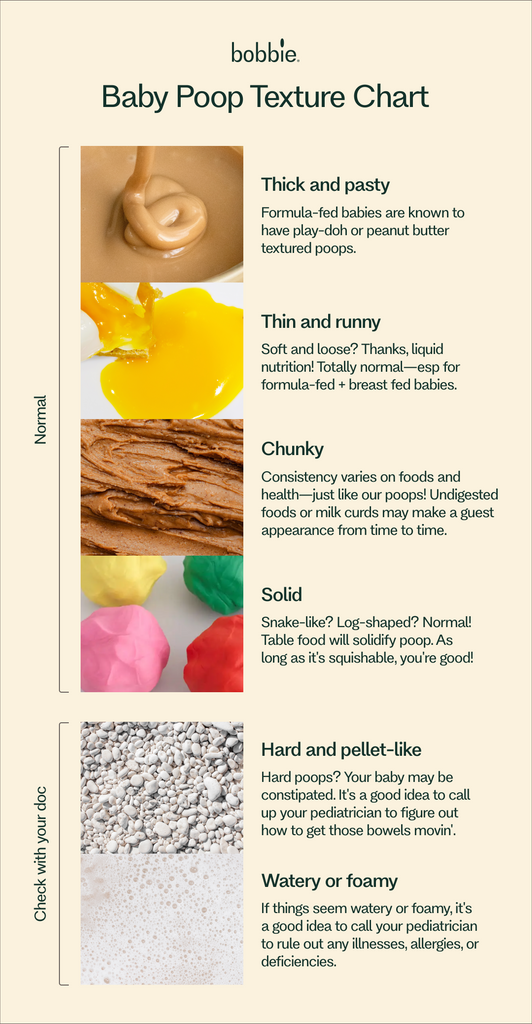
- Thick and pasty - Particularly with formula-fed babies, stools are often described as having a play-doh or peanut butter texture.
- Thin and runny - Soft, loose stools are totally normal for infants! While we tend to view loose stools negatively as adults, infants who are consuming only liquid nutrition (such as formula or breast milk) often have soft stools.
- Chunky - Stools may not be uniform in consistency and that is okay! Different foods as well as illness can change both the frequency and the texture of baby poop. Pieces of undigested food or milk curds can be expected from time to time.
- Formed - As you begin introducing table food, your baby’s poop may become more formed and log- or snake-like. This is normal! Solid stools are okay as long as they are still squishable when a hint of pressure is applied (sorry for the visual!).
- Hard - Very firm, pellet-like stools along with infrequent bowel movements are the two biggest signs of constipation in infants. If your infant has consistent, pellet-like stools that are hard and cause pain during bowel movements, your pediatrician may recommend offering “p” fruits such as pears or prunes or increasing your child’s water intake (both after 4-6 months of age).
-
Watery - Exceptionally loose, watery, or foamy stools (particularly after a bout of gastrointestinal illness or in conjunction with a diagnosed food allergy) can be a sign of temporary lactose intolerance, also called secondary lactase deficiency. In these cases, your pediatrician may suggest moving to a lactose-free formula, like a hypoallergenic or soy-based option, or removing dairy from your child’s diet for a few weeks. Please consult with your baby’s doctor if you notice watery stools that don’t seem to improve!
How Often Will Babies Poop
Parents are often shocked to learn that the normal range of time between bowel movements for infants is incredibly wide! While some babies will poop a few times a day, others may go several days between poops. Both can be normal! If your baby is consistently going a week or more without pooping, or is suddenly pooping significantly more often than a normal, it’s a good idea to call your pediatrician.
Remember, infrequency alone is not a sign of constipation in infants. If stool is soft, even while infrequent, this is typically fine. Constipation occurs when infrequency is accompanied by hard, pellet-like painful stools.
When to Call Your Pediatrician
Your baby’s doctor is a wonderful resource for all things baby poop! If you have questions or concerns, or if you want to run a picture or a fresh diaper by them, they are there to help. Any unusual changes in color (particularly black, red, or white baby poop), consistency (particularly very hard or very watery stools) or frequency should be evaluated by a professional.
That’s the Scoop on Poop!
Like many things in early parenthood, baby poop (or the lack thereof) can cause questions and anxiety. Rest assured that many of the variations you might notice are totally normal! Additionally, your baby’s stool patterns will likely become more consistent as they grow and their digestive system matures. Soon enough your focus will shift from, “What’s going on in this diaper?” to “How do I get this kid to poop in the toilet?”
Bobbie infant formulas are clean, EU-style infant formulas that meets all FDA requirements. They are complete nutrition, milk-based powder, modeled after breast milk and is easy on tummies. They are all non-GMO and do not have corn syrup, palm oil, or maltodextrin. Shop Bobbie today!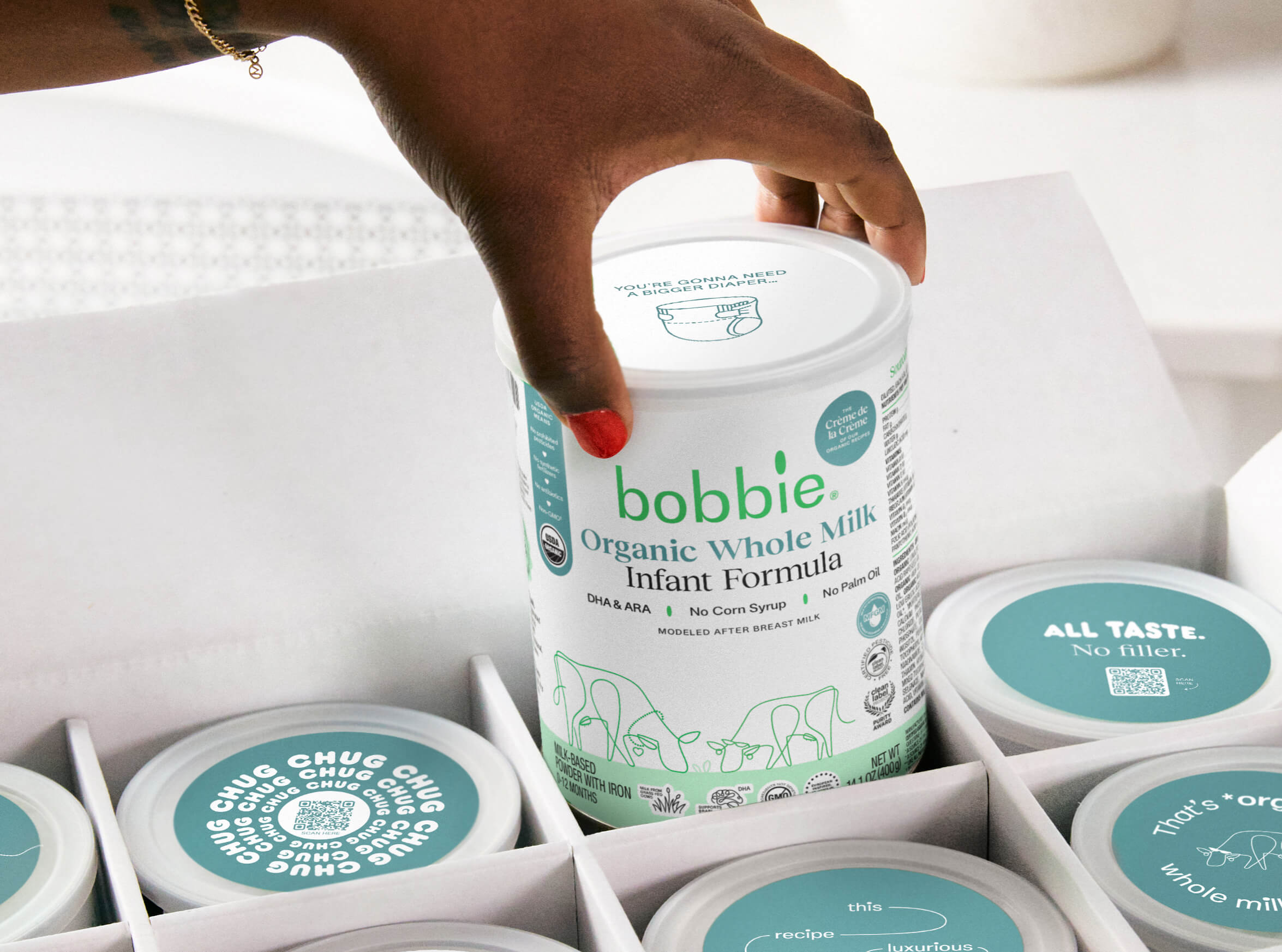
Shop Bobbie Baby Formula

The content on this site is for informational purposes only and not intended to be a substitute for professional medical advice, diagnosis or treatment. Discuss any health or feeding concerns with your infant’s pediatrician. Never disregard professional medical advice or delay it based on the content on this page.

